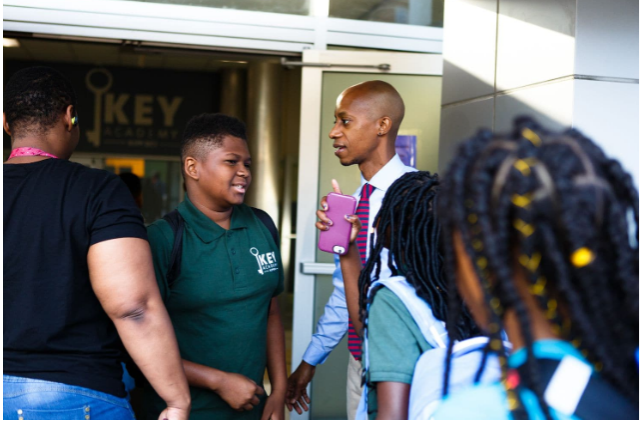'Far too many are still being left behind': Getting into college isn’t enough
ByJay Matthews
Read the full article at www.washingtonpost.com>
In 2001, I introduced myself to Mike Feinberg and Dave Levin, imaginative teachers in their early 30s who were launching a charter school network, KIPP. The young woman in charge of their first D.C. school told me her incoming fifth-graders, nearly all from low-income families, were called “The Class of 2009” because that was the year they were all going to college.
Today, KIPP has used careful training of teachers and principals and more time for learning to become the nation’s largest public charter organization, with nearly 100,000 students in 224 primary, middle and high schools. It has just released what is in some ways a surprising report on how to get those young people through college, or to good jobs if that is their preference.
Here, for instance, is KIPP’s analysis — with many facts new to me — of efforts in more than half the states to improve college affordability:
“These new policies are uneven in their ability to reach those most in need and are often tone deaf to the needs of today’s students. The money, in many instances, can only be used for tuition and not for other costs and fees. They are often last-dollar programs, i.e., the aid is offset by other grant funding, such as the federal Pell Grant. Many programs do not cover any tuition if a student opts to attend a four-year institution rather than a two-year institution, and they often have limits on eligibility that exclude older and working students.”
The report, “The Promise of a Choice-Filled Life,” summarizes what KIPP educators have learned from two decades of close contact with students as individuals, not statistics. It analyzes the successes and disappointments alumni have encountered after KIPP.
This school year, 95 percent of KIPP students are black or Latino, and 89 percent are from low-income families. Forty-five percent of KIPP high school graduates have attained bachelor’s degrees within six years, compared with only 11 percent of impoverished Americans in general. But the report says, as KIPP celebrates its 25th anniversary, that “far too many are still being left behind.”
Surveys of KIPP alumni enrolled in college in 2016 and 2017 found that 72 percent did not have summer jobs or internships that reflected what they were studying in college, 58 percent felt negatively judged by others based on their race, 57 percent worried about running out of food, and 43 percent missed meals to pay for school-related expenses.
The report recommends five ways to make colleges and careers more accessible. It reflects not fairy-tale hopes, but real problems and possibilities learned from working with often stressed and confused young people.
The recommendations:
- Target federal funding to build high-quality, evidence-based college counseling in urban high schools, where on average there is only 1 counselor for every 482 students.
- Get more state and federal money to students who need it, including small grants to cover emergencies, and require colleges to reveal what they are doing with the money they get.
- Focus funding from all sources on increasing college graduation rates for low-income and first-generation college students.
- Invest more in colleges and universities that have traditionally served underrepresented minorities and can show they have been effective.
- Pay more attention to helping students land a strong first job, including making the federal work-study program more relevant to students’ majors and career interests.
The report emphasizes that colleges rarely release data that allow comparisons of which are best at helping students who have financial disadvantages. It says high schools should pay more attention to preparing students for careers, quoting Georgetown University expert Anthony Carnevale: “There is almost no relationship between high school curricula and today’s occupations.” It suggests whittling down the amount of family income that impoverished students pay for four years of college, from the current 72 percent to the 14 percent that affluent students pay.
Susan Schaeffler is the teacher who showed me KIPP’s first D.C. school in 2001. She now runs 16 of them. To stimulate thinking about careers, she has high schools partnering with the nonprofit National Academy Foundation to create experiences in finance, as well as job-oriented field trips and workshops. I look forward to the next report on how well this is working.
